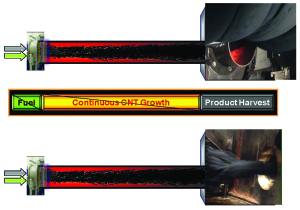
Breaking News
6.5x55 Swedish vs. 6.5 Creedmoor: The New 6.5mm Hotness
Best 7mm PRC Ammo: Hunting and Long-Distance Target Shooting
 Christmas Truce of 1914, World War I - For Sharing, For Peace
Christmas Truce of 1914, World War I - For Sharing, For Peace
Top Tech News
 EngineAI T800: Born to Disrupt! #EngineAI #robotics #newtechnology #newproduct
EngineAI T800: Born to Disrupt! #EngineAI #robotics #newtechnology #newproduct
 This Silicon Anode Breakthrough Could Mark A Turning Point For EV Batteries [Update]
This Silicon Anode Breakthrough Could Mark A Turning Point For EV Batteries [Update]
 Travel gadget promises to dry and iron your clothes – totally hands-free
Travel gadget promises to dry and iron your clothes – totally hands-free
 Perfect Aircrete, Kitchen Ingredients.
Perfect Aircrete, Kitchen Ingredients.
 Futuristic pixel-raising display lets you feel what's onscreen
Futuristic pixel-raising display lets you feel what's onscreen
 Cutting-Edge Facility Generates Pure Water and Hydrogen Fuel from Seawater for Mere Pennies
Cutting-Edge Facility Generates Pure Water and Hydrogen Fuel from Seawater for Mere Pennies
 This tiny dev board is packed with features for ambitious makers
This tiny dev board is packed with features for ambitious makers
 Scientists Discover Gel to Regrow Tooth Enamel
Scientists Discover Gel to Regrow Tooth Enamel
 Vitamin C and Dandelion Root Killing Cancer Cells -- as Former CDC Director Calls for COVID-19...
Vitamin C and Dandelion Root Killing Cancer Cells -- as Former CDC Director Calls for COVID-19...
 Galactic Brain: US firm plans space-based data centers, power grid to challenge China
Galactic Brain: US firm plans space-based data centers, power grid to challenge China
Nanocomp Technologies makes bulk carbon nanotubes 100 times longer at 1-10 ....

"Despite attractive mechanical and electrical properties, CNTs have largely been a disappointment for 'real-world' applications, because it has not been possible to make them in formats that are useful for engineers," explains Peter Antoinette, co-founder and president of Nanocomp Technologies Inc. (Merrimack, N.H.; www.nanocomptech.com), the developer of the process. Short CNTs do not readily form networks within other materials, unless used at very high concentrations.
The Nanocomp process revolves around a proprietary 1-m long heated reactor (photo) that contains a widely available iron catalyst and allows control of 23 separate process variables. Organic alcohols serve as the carbon source for CNTs. "By exerting tight control over the process conditions, we can manipulate the length and dimensions of the CNTs," Antoinette says. The longer, polymer-like CNTs resulting from the process are commercially available as Miralon products, and they can be spun into "yarn" using equipment for textile fiber processing. Because of their length, the Nanocomp CNTs form bundles and networks that allow them to be more useful in macroscale materials, such as for lightweight structural materials.

 The State's Last Stand
The State's Last Stand


